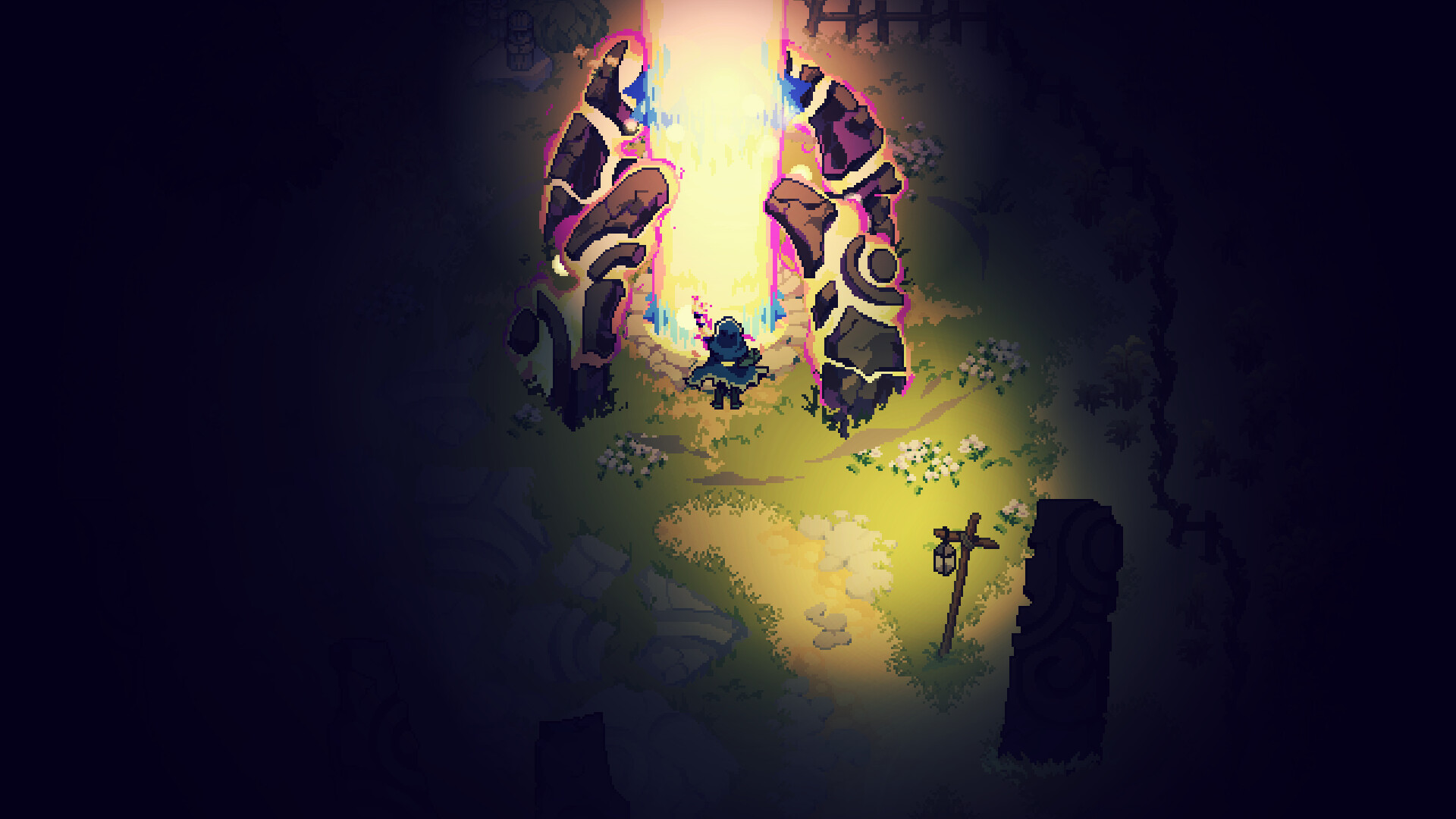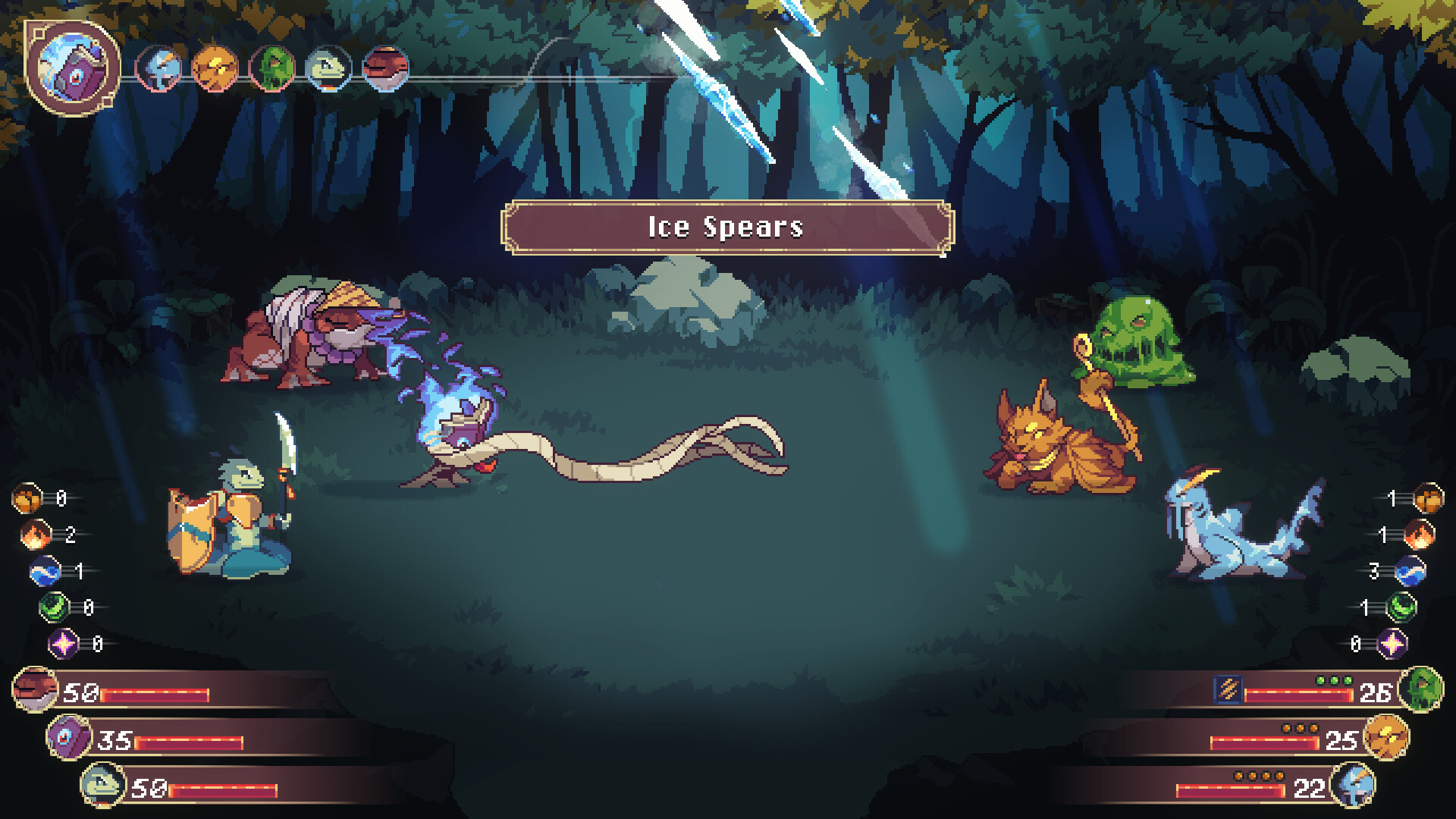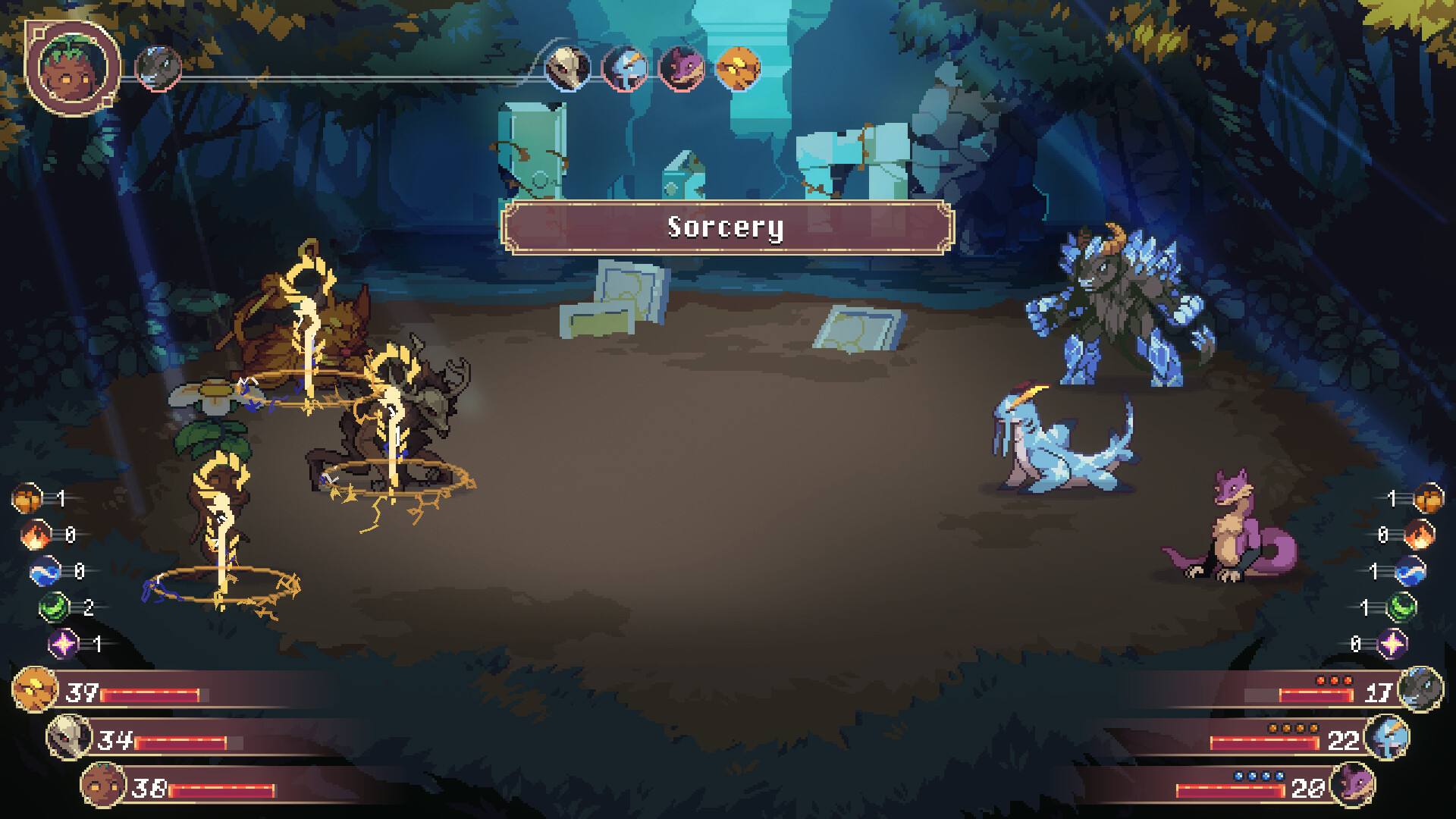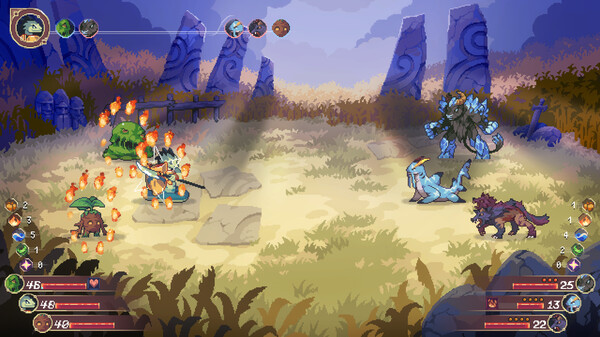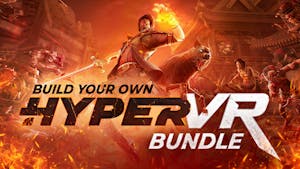

Encounter the Monsters of Terastae that defied the virtues of this world and are trapped in a cycle of death and rebirth. You as an Aethermancer have the ability to bond with these Monsters and help them achieve Worthiness to escape this cycle. Guide a party of three Monsters through dangerous environments and utilize their actions and skills in combat. As they advance, make decisions in a smart skill selection system. What skills you can choose from is based on the Monster’s types and elements, the skill choices you made before and the other Monsters in your party - making every Monster truly unique!
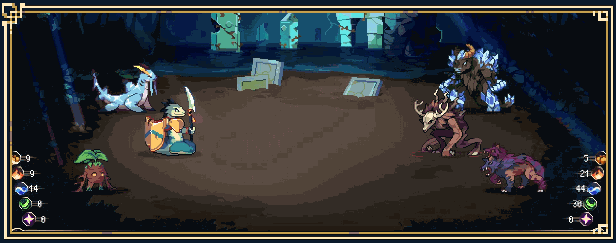

Fight ferocious Monsters and divine bosses in turn-based battles where every action has consequences. Adapt your strategy to each combat, consider your synergies, and plan the actions of your Monsters wisely. Harness and manage the four elements of Aether in order to unleash powerful spells. But whatever you do, make sure you watch the HP of your Monsters...
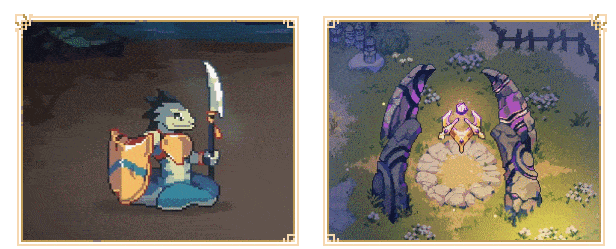

When your Monsters die in combat, you will lose them. Permanently. But you have the power to defy death by using their souls for rebirth. Their skills will be lost in the process, but they may live again as the same Monsters. Never lose hope! Your Monsters will grow stronger from their previous lives as they gain Worthiness with your help.
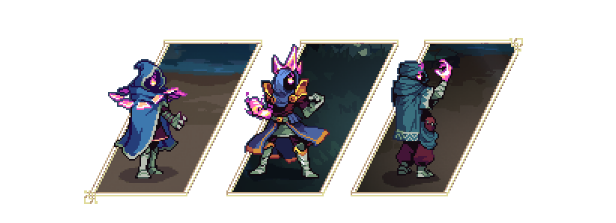

Impact combat as the Aethermancer. Unlock player classes that allow you to take on different roles. Each player class has distinguishing features that change how you play the game, allowing you to experience the game in your own way.
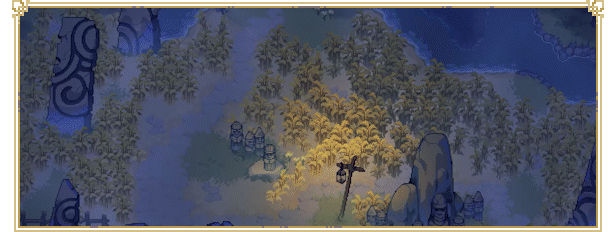

Stop the encroaching danger of the Void. Use your Aethermancer abilities and explore, sneak, and fight your way through procedurally generated levels with multiple pathways. Keep going until you lose your Monsters.
Regather in the Pilgrim’s Rest and advance through the Aether and Prestige you collected.
And then… try again!


Special thanks to Path of Pixels (logo), HeavyMetalHanzo (key artwork) and Steven Melin (soundtrack)!
Devlog #7 | Choose your Monster!

Monsters generally have two elements, three to five types, and a signature trait. What does that mean exactly?
Naga has the elements Fire and Water. These mainly determine which actions Naga can learn. Similar to Monster Sanctuary, we have four elements in Aethermancer: Earth, Fire, Wind, and Water. Unlike Monster Sanctuary, however, we also have actions that combine two of those elements at the same time. For instance, lightning actions are both Fire & Wind, whereas ice actions are both Water & Wind. Naga can essentially learn actions that are Fire, Water, or a combination of elements that include Fire or Water (such as Fire/Water, Fire/Wind, Earth/Water, etc.).
Naga has the types Attacker, Tank, Shielder, and Power. These tell the player exactly what the Naga is all about - what role it can generally take on in combat. The types also directly determine both the actions and traits that the Monster can learn. Actions are active skills, traits are passive skills. So basically, Naga can learn skills that help it deal attack damage, allow it to be a tank in combat, apply shields, and apply Power buff stacks.
Lastly, Naga has the Counter Attack signature trait. This is a passive skill that is unique to Naga - Naga always starts out with this skill, and no other Monster in the game can learn it. Every Monster has such a signature trait. The Physical Retaliation keyword means that this trait triggers whenever Naga is dealt damage by an enemys physical damage action.

Wolpertinger is more of a fragile damage dealer, with most of its types dedicated to helping it deal damage. It has both the Attacker and Spellcaster type, which makes it a hybrid damage dealer. The Debuffer type helps Wolpertinger apply lots of debuffs, and rewards it for doing so. The Critical type helps with getting more crits, enables new ways of critting, and also rewards Wolpertinger for getting as many crits as possible. The Armor Break type further helps Wolpertinger with applying a specific type of debuff, Armor Break, and makes Armor Break stacks on enemies even more devastating.
There are four core buffs and four core debuffs in Aethermancer. These are the most common buffs and debuffs in the game. Each element has a core buff and a core debuff associated with it. For example, Water is associated with Armor Break (debuff) and Regeneration (buff).
Wolpertingers signature trait Eagle Eyes lets it copy its enemies actions - which can be very useful when youre trying to use your available Aether in the most efficient way possible. The keyword On Copied Action triggers whenever Wolpertinger uses such a copied action - rewarding Wolpertinger by applying additional Armor Break stacks.

Orthrus is another rather offensive Monster, but focusing on physical damage and the Sidekick and Power buff stacks.
The design of Orthruss signature trait should feel familiar to our Monster Sanctuary fans. We generally tried to design the traits of Aethermancer similar to the passives of Monster Sanctuary - encouraging players to build powerful team synergies. You will find some key differences in Aethermancer however. For instance, you no longer need specific auras to get multiple stacks of the same buff or debuff - all core buffs and debuffs stack infinitely by default. So right from the start, if Orthrus casts Sidekick (buffing action which applies 1 stack of Sidekick on the whole party), it will result in an extra stack of Sidekick on one of your other Monsters. Crazy, right?
Signature traits are mainly designed with two goals in mind:

One of the essential mechanics of Aethermancer (which is also new for our Monster Sanctuary fans) is Aether. It only makes sense that there are Monsters with the Aether type which specialize both in accumulating Aether, as well as spending additional Aether for strong extra effects. Star Spawn is such a Monster - whenever it uses any spell (including both damage and support spells), it may trigger an additional random damage spell. We wanted to design Star Spawn as a prototypical, powerful spellcasting Monsters - what says powerful spellcaster better than casting extra spells every turn?
You already know about Earth, Fire, Water, and Wind Aether. One for each element - makes sense. There is an additional fifth type of Aether, however: Wild Aether. Only specific actions and traits can generate this type of Aether. It can be used as any type of Aether, which makes it very useful in combat. Missing a Fire Aether for your big Fire Storm? Just use a Wild Aether instead. Additionally, certain Monsters like Star Spawn utilize your Wild Aether in unique ways.
Also, Star Spawns signature trait reveals a hidden, third design goal for signature traits:
This design goal is only present with certain signature traits, which feature randomized and dynamic gameplay elements. Having to deal with the unexpected is not everyones cup of tea, so this kind of effect is mainly found on certain signature traits. We generally reduced the amount of random effects in Aethermancer compared to Monster Sanctuary.
Thats all for todays devlog. We hope you have a better idea of our Monsters now!
Welcome to a new devlog! This is our first devlog diving into the combat mechanics of Aethermancer. Thats right! It took a long time (lots and lots of iterations and internal prototypes) to get the combat feel just right, but now we are comfortable with sharing some specifics of the combat design. We are starting out with some key Monster attributes - the stuff that makes every single Monster unique, special, and worthwhile.

NAGA

- Elements: Fire / Water
- Types: Attacker, Tank, Shielder, Power
- Signature Trait: Counter Attack: Physical Retaliation: This Monster launches an immediate basic attack against that enemy.
Monsters generally have two elements, three to five types, and a signature trait. What does that mean exactly?
Naga has the elements Fire and Water. These mainly determine which actions Naga can learn. Similar to Monster Sanctuary, we have four elements in Aethermancer: Earth, Fire, Wind, and Water. Unlike Monster Sanctuary, however, we also have actions that combine two of those elements at the same time. For instance, lightning actions are both Fire & Wind, whereas ice actions are both Water & Wind. Naga can essentially learn actions that are Fire, Water, or a combination of elements that include Fire or Water (such as Fire/Water, Fire/Wind, Earth/Water, etc.).
Naga has the types Attacker, Tank, Shielder, and Power. These tell the player exactly what the Naga is all about - what role it can generally take on in combat. The types also directly determine both the actions and traits that the Monster can learn. Actions are active skills, traits are passive skills. So basically, Naga can learn skills that help it deal attack damage, allow it to be a tank in combat, apply shields, and apply Power buff stacks.
Lastly, Naga has the Counter Attack signature trait. This is a passive skill that is unique to Naga - Naga always starts out with this skill, and no other Monster in the game can learn it. Every Monster has such a signature trait. The Physical Retaliation keyword means that this trait triggers whenever Naga is dealt damage by an enemys physical damage action.
WOLPERTINGER

- Elements: Water / Wind
- Types: Attacker, Spellcaster, Debuffer, Critical, Armor Break
- Signature Trait: Eagle Eyes: This Monster can copy and use the last 2 enemy actions. On Copied Action: Apply Armor Break on target enemy.
Wolpertinger is more of a fragile damage dealer, with most of its types dedicated to helping it deal damage. It has both the Attacker and Spellcaster type, which makes it a hybrid damage dealer. The Debuffer type helps Wolpertinger apply lots of debuffs, and rewards it for doing so. The Critical type helps with getting more crits, enables new ways of critting, and also rewards Wolpertinger for getting as many crits as possible. The Armor Break type further helps Wolpertinger with applying a specific type of debuff, Armor Break, and makes Armor Break stacks on enemies even more devastating.
There are four core buffs and four core debuffs in Aethermancer. These are the most common buffs and debuffs in the game. Each element has a core buff and a core debuff associated with it. For example, Water is associated with Armor Break (debuff) and Regeneration (buff).
Wolpertingers signature trait Eagle Eyes lets it copy its enemies actions - which can be very useful when youre trying to use your available Aether in the most efficient way possible. The keyword On Copied Action triggers whenever Wolpertinger uses such a copied action - rewarding Wolpertinger by applying additional Armor Break stacks.
ORTHRUS

- Elements: Fire / Wind
- Types: Attacker, Critical, Sidekick, Power
- Signature Trait: Shared Fury: Whenever this Monster gains Sidekick or Power, that buff is shared with another random party member.
Orthrus is another rather offensive Monster, but focusing on physical damage and the Sidekick and Power buff stacks.
The design of Orthruss signature trait should feel familiar to our Monster Sanctuary fans. We generally tried to design the traits of Aethermancer similar to the passives of Monster Sanctuary - encouraging players to build powerful team synergies. You will find some key differences in Aethermancer however. For instance, you no longer need specific auras to get multiple stacks of the same buff or debuff - all core buffs and debuffs stack infinitely by default. So right from the start, if Orthrus casts Sidekick (buffing action which applies 1 stack of Sidekick on the whole party), it will result in an extra stack of Sidekick on one of your other Monsters. Crazy, right?
Signature traits are mainly designed with two goals in mind:
- Do something unique, which other Monsters cant do. Each Monster should stand out.
- Have strong potential to play or build around. Each Monster should make the player interested to try out new strategies.
STAR SPAWN

- Elements: Fire / Water
- Types: Spellcaster, Shielder, Aether, Power
- Signature Trait: Wrath of the Void: On Spell Action: If you have 1 or more Wild Aether, consume up to 4 of them to cast a random damage spell in the game with equal cost.
One of the essential mechanics of Aethermancer (which is also new for our Monster Sanctuary fans) is Aether. It only makes sense that there are Monsters with the Aether type which specialize both in accumulating Aether, as well as spending additional Aether for strong extra effects. Star Spawn is such a Monster - whenever it uses any spell (including both damage and support spells), it may trigger an additional random damage spell. We wanted to design Star Spawn as a prototypical, powerful spellcasting Monsters - what says powerful spellcaster better than casting extra spells every turn?
You already know about Earth, Fire, Water, and Wind Aether. One for each element - makes sense. There is an additional fifth type of Aether, however: Wild Aether. Only specific actions and traits can generate this type of Aether. It can be used as any type of Aether, which makes it very useful in combat. Missing a Fire Aether for your big Fire Storm? Just use a Wild Aether instead. Additionally, certain Monsters like Star Spawn utilize your Wild Aether in unique ways.
Also, Star Spawns signature trait reveals a hidden, third design goal for signature traits:
- Have the potential to make each combat and each run of Aethermancer feel different. Each combat and each run should stand out.
This design goal is only present with certain signature traits, which feature randomized and dynamic gameplay elements. Having to deal with the unexpected is not everyones cup of tea, so this kind of effect is mainly found on certain signature traits. We generally reduced the amount of random effects in Aethermancer compared to Monster Sanctuary.
Thats all for todays devlog. We hope you have a better idea of our Monsters now!
Hope you guys know more about our monsters now. If you want to directly ask our Game Designer Anton about the monsters in Aethermancer, head on over to Reddit to a little live q&a:
r/AethermancerGame[ 2023-09-29 10:41:38 CET ] [Original Post]
Minimum Setup
- OS: Ubuntu 14.04
- Processor: Dual-Core. 2.0 GHzMemory: 2 GB RAM
- Memory: 2 GB RAM
- Graphics: GeForce 8800 GT 512 MB. Radeon HD 4870 512 MB
- Storage: 1 GB available space
GAMEBILLET
[ 6444 ]
GAMERSGATE
[ 2268 ]
MacGamestore
[ 1913 ]
FANATICAL BUNDLES
HUMBLE BUNDLES
by buying games/dlcs from affiliate links you are supporting tuxDB

